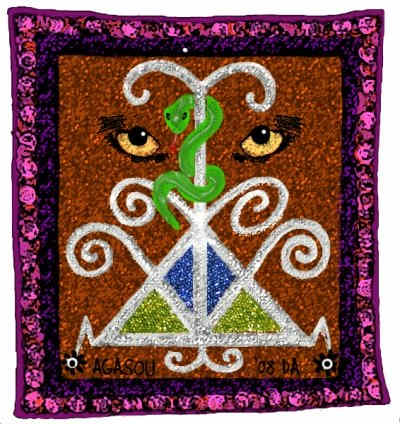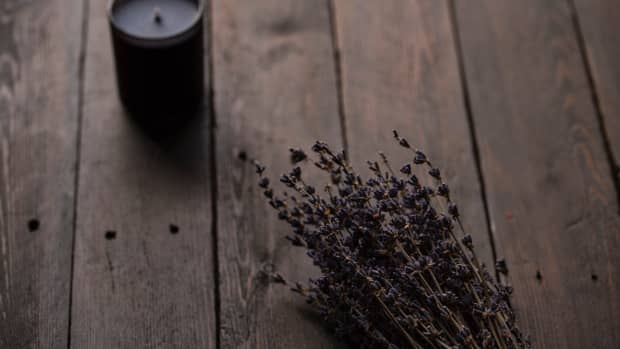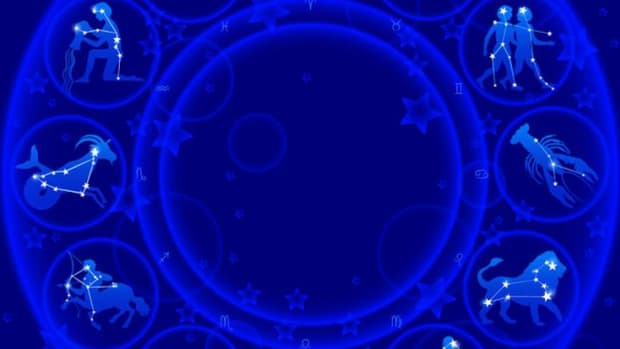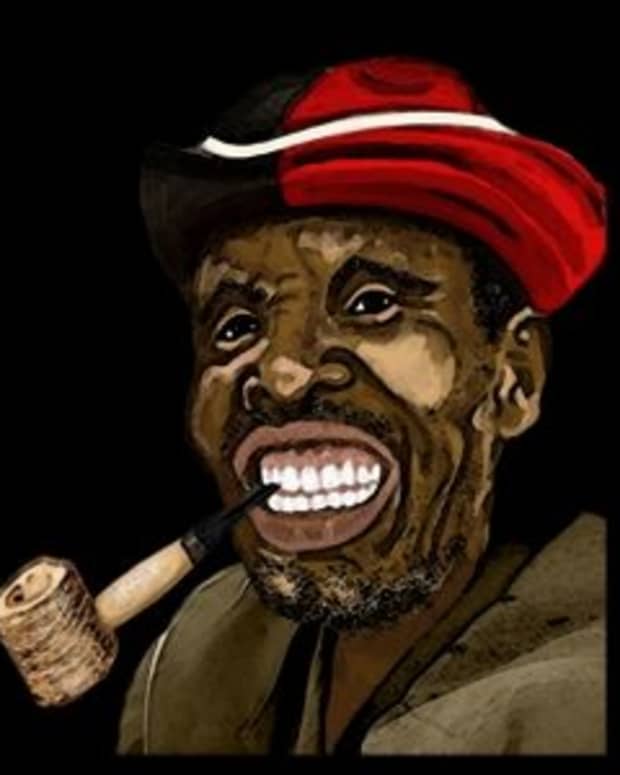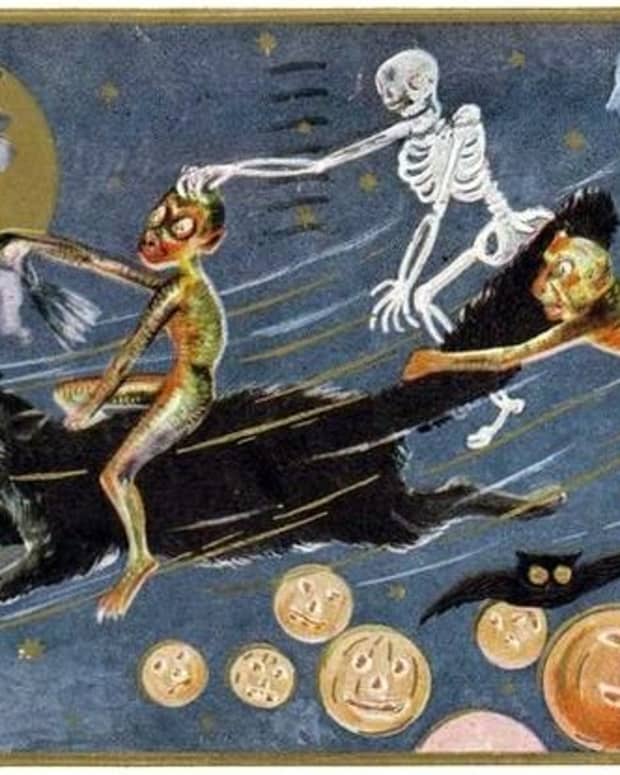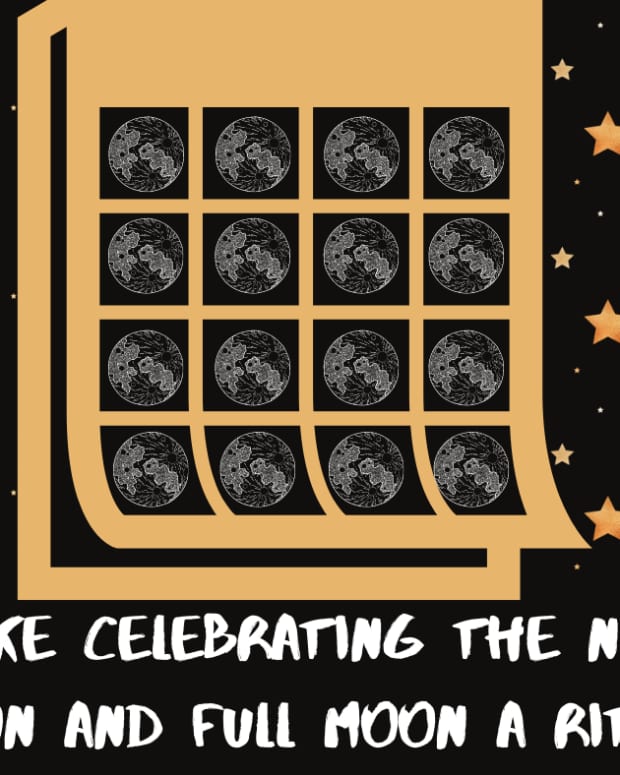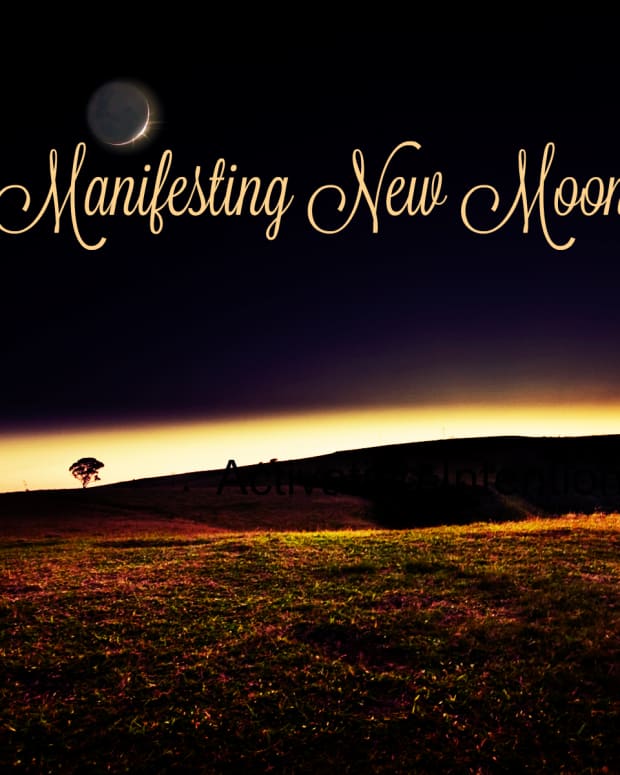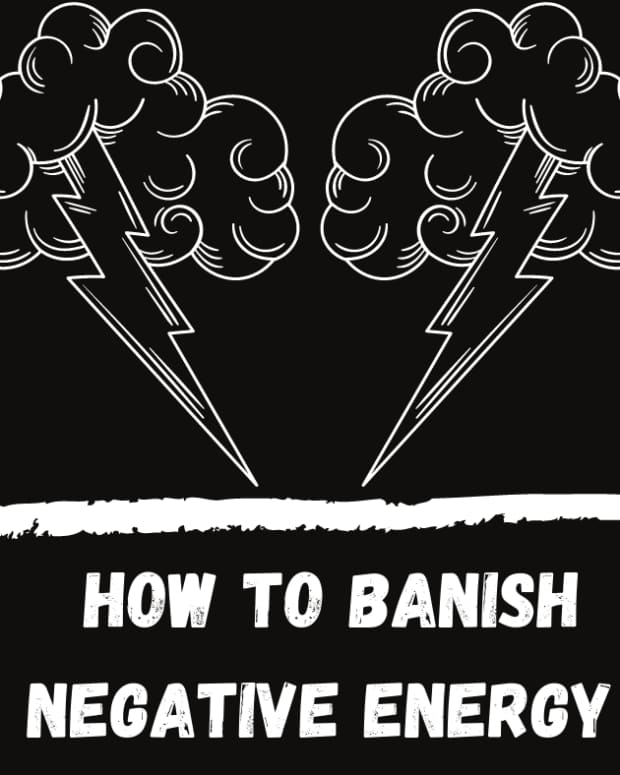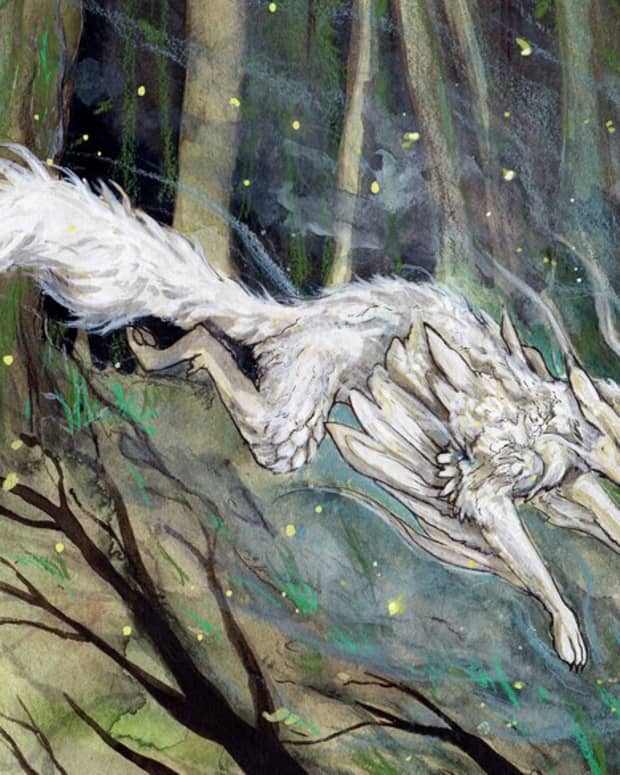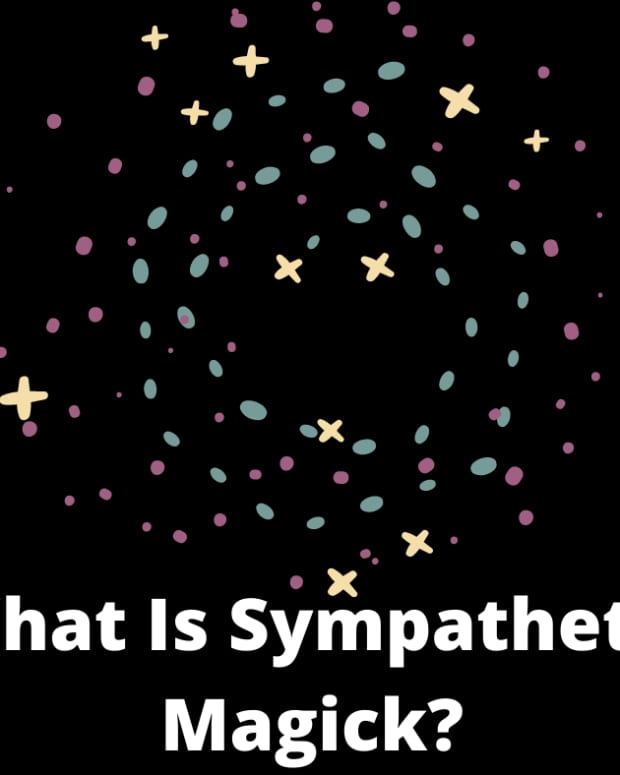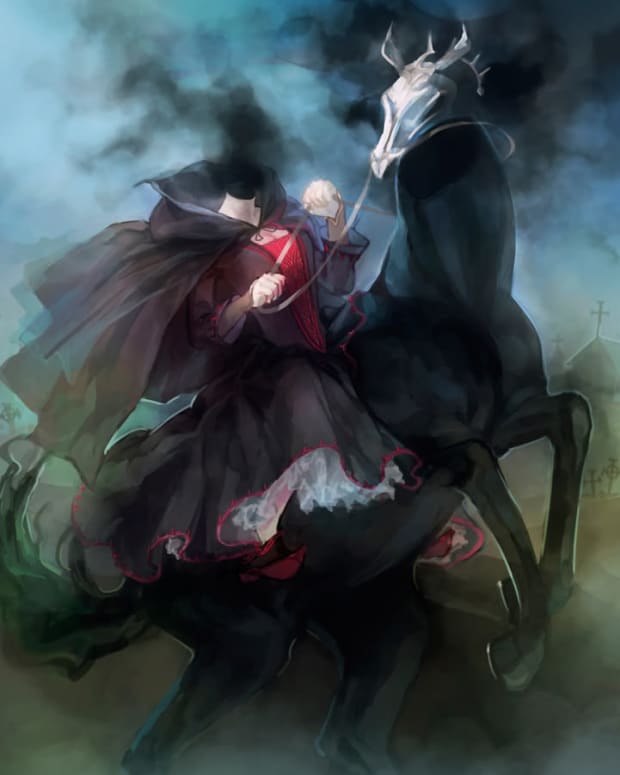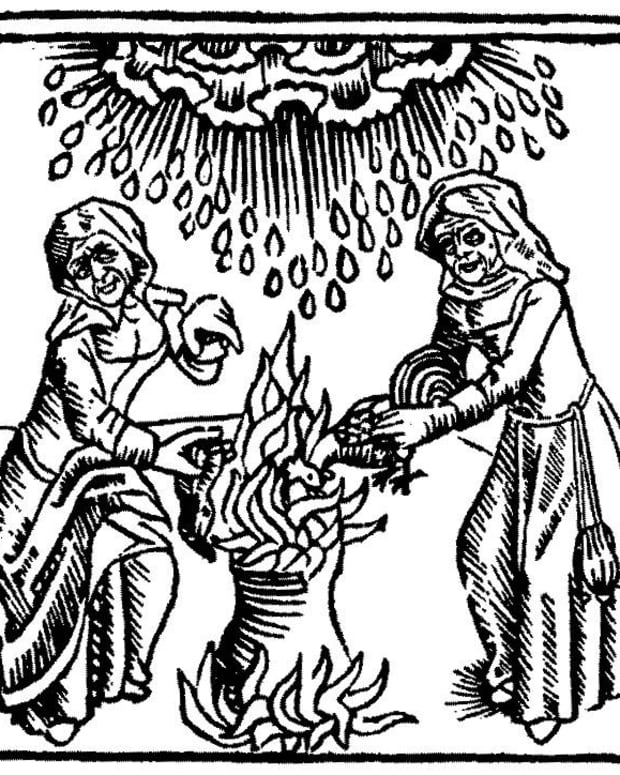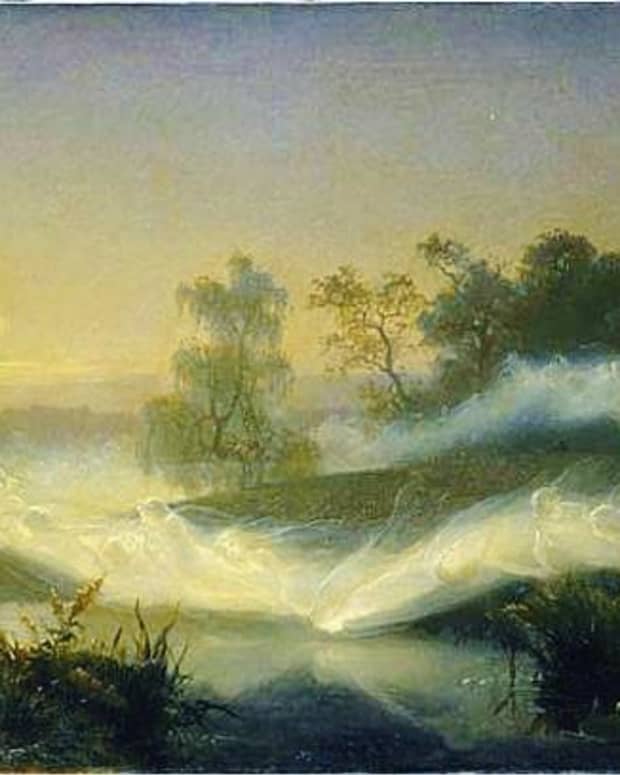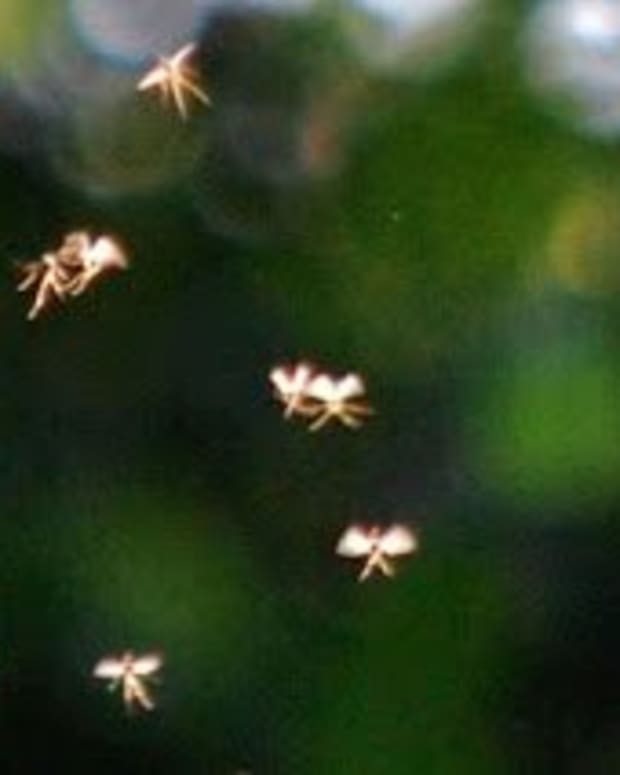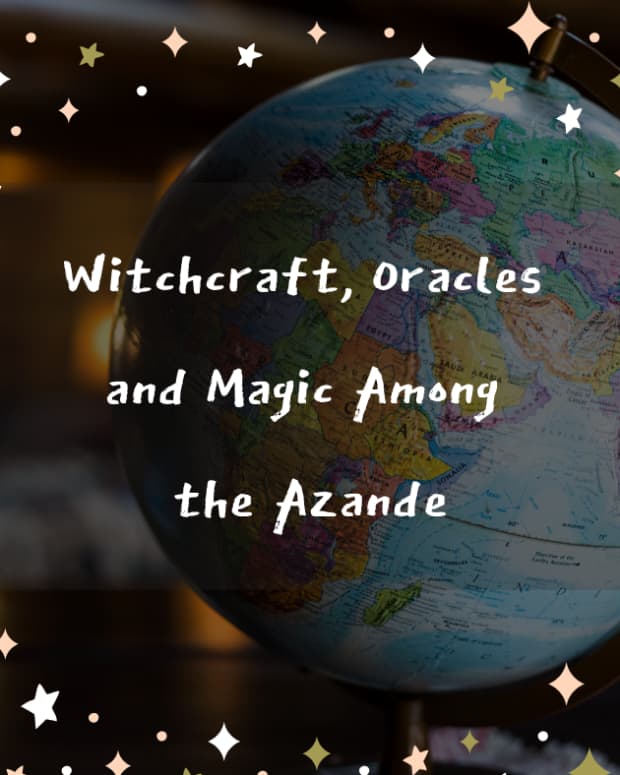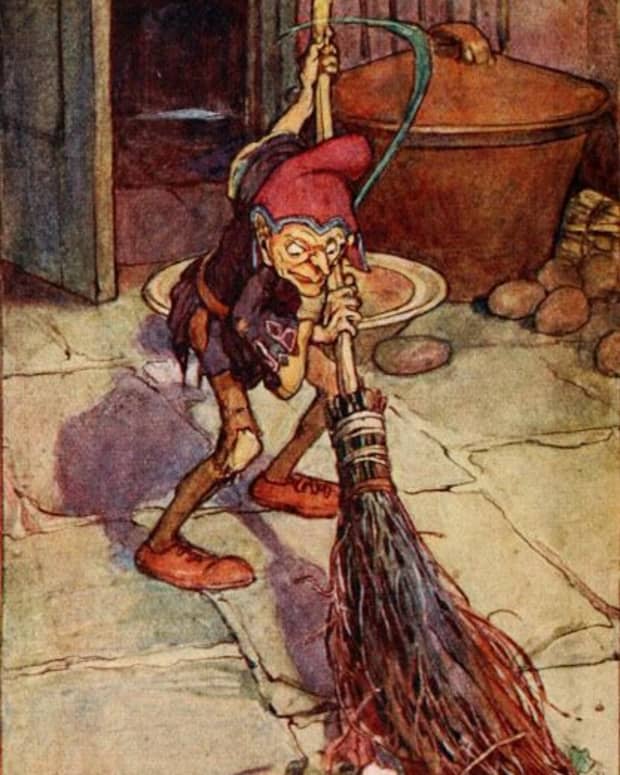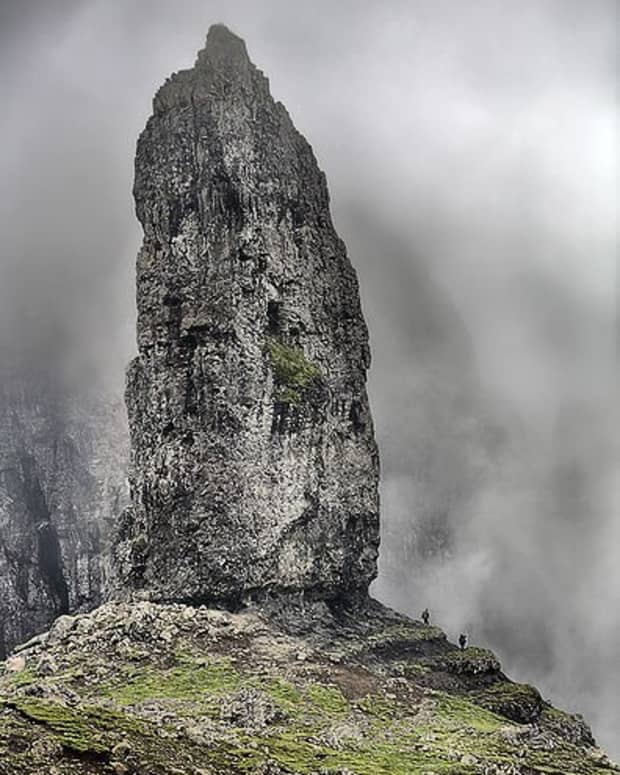Ritual Symbols of the Vodou Spirits: Vodou Veves
Denise is an artist and online writer who enjoys investigating the mystical and mythical aspects of the human experience.
The Ritual Symbols of Voodoo
A veve is a religious symbol for a Vodou "loa" (or lwa) and serves as their representation during rituals. In Haiti, the veve derives from the beliefs of the native Tainos. Most similar to the veve are the drawings of zemi or gods of the Taino religion.
Every loa has his or her own unique veve, although regional differences have led to different veves for the same loa in a few cases. Sacrifices and offerings are usually placed upon them.
The veve is usually drawn on the floor by strewing a powder-like substance, such as cornmeal, wheat flour, bark, red brick powder, or gunpowder. The material depends entirely upon the rite.
I like to use these ritual symbols in my artwork. I incorporate them everywhere because they speak to me, each in a different way, each for a different reason. The veve in the introduction represents the Voodoo loa Papa Legba, who is the gatekeeper to the spirit world, remover of obstacles, and provider of opportunities.
The veves on this lens are my interpretations of these ancient and powerful symbols, and as such are protected by copyright law. Please do not use my artwork without permission.
Agasou, Patron Loa of the Home, Family, and Lineage
Agasou is an obscure Voodoo deity who is said to be the son of a divine being (the spirit Kpo, a leopard) and a human (Princess Aligbono, daughter of the King of Tado). Agasou was the founder of the Dahomean Empire, and was elevated to the status of divine royal ancestor upon his death. Legend has it that Agasou brought Vodou across the waters to the children of Guinea in Haiti, with the help of a crab. Thus, the crab and the leopard are his totems.
Agasou is the patron loa of the home, family, and lineage. He is the husband of Silibo Vavou, loa and founder of another lineage. Agasou's colors are white, gold, yellow, tan, and brown. His day of the week is Thursday, and his feast day is celebrated on August 25th. He is often represented with an image of St. Louis IX, King of France.
Reference:
Kahulain, K. (2003). Demonbusters. WitchVox.com. Retrieved:
http://www.witchvox.com
Read More From Exemplore
Ayizan
Ayizan is the loa of the French marketplace, commerce, and herbal healing. She represents love and is associated with Vodou rites of initiation. Ayizan is regarded as the first or archetypal mambo (priestess), and associated with priestly knowledge and mysteries, particularly those of initiation. She is the protector of religious ceremonies. She is syncretized with Saint Clare and said to be married to Papa Loco. Her symbol is the palm frond, and she doesn’t drink alcohol. On Palm Sunday, people gather the leaves and use them as an offering to her. Her colors are gold, yellow, white, and silver. In New Orleans she is often represented with the color pink and is given sugar cane syrup, yams, and plantains, along with palm fronds, as offerings.
Manman Brigitte
In Vodou, Ma'man Brigit (Grann Brigitte, Manman, Manman Brigit, Manman Brijit) is the mother of cemeteries, the loa of money and death, and the wife of Baron Samedi. She may be related to the "triple" Celtic goddess of poetry, smithcraft, and healing, Brigid/St. Brigit, as her name is Irish in origin. She is usually depicted as a white woman. The first woman's grave in a cemetery in Haiti is dedicated to her. Her colors are black, purple and white, her number is nine, and her particular days of service include Monday and Saturday. Her sacrificial animal is a black chicken. She drinks rum laced with hot peppers - "gaz lakrimojen Ayisyen" (Haitian tear gas), and like her husband and the rest of the Guede Spirits, she is a "potty mouth" and uses profanity. Ma'man Brigit will protect gravestones if they are marked properly with a cross. Ma'man Brigit is known to rub her private parts with hot peppers, and those who appear to be faking possession by her in a Vodou ceremony may be subjected to this test, which they obviously would not pass if their possession is not genuine. She is a very sexual dancer, and her legacy is the banda dance.
A very powerful lwa, Manman Brigit rules the Ghede and transitions of life and death, major life changes, cemeteries, money and children. Ma'man Brigit is invoked to cure those who are near death as a result of magick. She is known to be very wise, and swift to respond to petitions for help!
Ogun, Patron Loa of Technology and the Unemployed
Ogun (Ogoun) is the traditional warrior, similar to the spirit of Ares in Greek mythology. As such, Ogun is mighty, powerful, and triumphal; yet, he exhibits the rage and destructiveness of the warrior whose strength and violence can turn against the community he serves. Ogun gives strength through prophecy and magic. It is Ogun who is said to have planted the idea, led and given power to the slaves for the Haitian Revolution of 1804. He is called now to help people obtain a government more responsive to their needs.
In Yoruba mythology, Ogun is a son of Yemaja (Yemayá) and Orungan. In Santería and Palo Mayombe, he is identified with Saint Peter. In Haitian Vodou, he is associated with St. James the Greater and St. George. In New Orleans Voodoo, he is associated with St. Anthony and St. George. In all his incarnations Ogun is a fiery and martial spirit. He is also linked with blood, and is for this reason often called upon to heal diseases of the blood. In addition, he is often called upon to bring work to the unemployed.
Ogun是一个非常强大的贷款。是他掌管着over fire, iron, hunting, politics and war. He is also considered to be the Father of technology as we know it today. Ogun is the family provider. He hunts so that his family will not go hungry. He is the patron of smiths and of the unemployed and is usually displayed with a machete or sabre, rum, and tobacco. He is one of the husbands of Erzulie, but is also linked to Oshun in a fiery and passionate affair of the heart.
This photo of Ogun to the right appeared in 2008 on National Geographic's Taboo, on an episode called "Extreme Rituals".
Papa Legba, Guardian of the Crossroads
Papa Legba is the master linguist, the trickster, warrior, and the personal messenger of destiny. He has the power to remove obstacles and he provides opportunities.
All ceremonies begin and end with Papa Legba, as it is he who opens the gates to the world of the Invisibles, much like St. Peter traditionally throws wide the gates to heaven. There can be no communication with any of the other loas without consulting him first. His gift for linguistics enables him to translate the requests of humans into the languages of the Spirits, the Orishas, and the Loas.
Legba has his origins with the Fon people of Dahomey (Benin) Africa and is said to be the guardian and trickster of the crossroads and entrances. He is widely worshipped and similar spirits are found all over the world.
According to one legend, Papa Legba is the youngest son of Mawu and Liza, the creators of the world. Mawu and Liza are portrayed as twins but are one in Spirit. Mawu is the female aspect, and is associated with the East, the night moon, fertility, motherhood and night. Liza is the male aspect, and is associated with the West, the daytime sun, heat, work and strength. In another legend, he is the son of Oshun.
Voodoo practitioners place representations of Papa Legba behind the front door of their home in order to clear the path, accomplish goals, and to bring his protection.
If you are interested, read more aboutPapa Legba.
Baron Samedi
A very powerful Loa, Baron Samedi is the head of the family of ancestral loa, the Ghede, and is considered one of the patron loas of New Orleans. Baron Samedi is one of the Gud, a loa of the dead, along with Baron's other incarnations Baron Cimetire, and Baron La Croix. He is the head of the family of ancestral loa. As Master of the Cemetery and guardian of ancestral knowledge, Baron Samedi is typically depicted as if ready to be buried Haitian style with a top hat, black tuxedo, dark glasses, and cotton plugs in the nostrils. He has a white, mostly skull-like face and speaks with a nasal tone of voice. The first burial of a man in any cemetery in Haiti is dedicated to Baron Samedi. His wife is the loa Maman Brigitte.
首先是站在十字路口,souls of dead humans pass on their way to Guinee. As well as being the all-knowing loa of death, he is a sexual loa, frequently represented by phallic symbols. He is noted for disruption, obscenity, debauchery, and for having a particular fondness for tobacco, especially Pall Mall cigarettes, money, and white rum. The Baron's ceremonial foods included grilled peanuts, black coffee, and bread. One of his favorite drinks is rum in which 21 hot peppers has been steeped. Baron Samedi is also the loa of sex and resurrection.
Erzulie Dantor, Defender of Women and Children
In the Voodoo Pantheon, there is an important group of female loa (goddesses) whose first name is Erzulie. While all of them share in their role as goddess of love, art, and sex, each has additional areas of life which is theirs to defend and assist. Erzulie is three in aspect: she can be Erzulie Freda, a virgin goddess likened to the Virgin Mary; Erzulie Dantor, loa of jealousy and passion; or La Siren, a personification of the sea and goddess of motherhood. As Freda, her color is pink, her animal a white dove. As Dantor, her colors are blue and gold. She is associated with the Lukumi Orisha Oshun, and sometimes Chango (as Erzulie Dantor).
Erzulie Dantor is the Voodoo goddess of love, romance, art, jealousy, passion, & sex. Erzulie Dantor is the patron loa of lesbian women, fierce protector of women experiencing domestic violence and patron loa of New Orleans. Beauty, love, and sensuality are her Creations. Fiery emotions are what link her to the endless reservoir of universal creativity. Erzulie Dantor offers to you protection and possibilities beyond the imagination.
Erzulie Dantor is a mulatto woman who is often portrayed as the Black Madonna, or the Roman Catholic "Saint Barbara Africana". She has tribal scars on her cheek, and is considered heterosexual because she has children, but she is also the patron loa of lesbian women. Thus, she loves women fiercely, and will defend them to the death. She loves knives and is considered the protector of newly consecrated Voodoo priests and priestesses, as well as of women and children who are victims of domestic violence, and women who have been betrayed by a lover. She is highly respected and much feared due to her Woman Power. Most Haitian women serve Dantor, and she is also the patron loa of New Orleans and so she is served by many there as well. She also supports independent business women and is the patron of women's finances. Many women invoke Erzulie Dantor against their partners (male or female) should they become violent. And enlightened men also serve Dantor, especially men who honor, love and respect women.
Erzulie’s personal story is a tragedy. She was a warrioress who fought with her people during the Haitian revolution. However, her own people cut out her tongue so that she would not tell their secrets should she be captured. Thus, she is mute and can only speak a stammering monosyllable, "ke-ke-ke-ke-ke!" This is the sound of her tongue clicking on the roof of her mouth. She is often pictured with her daughter Anais, who serves as her translator and interpreter.
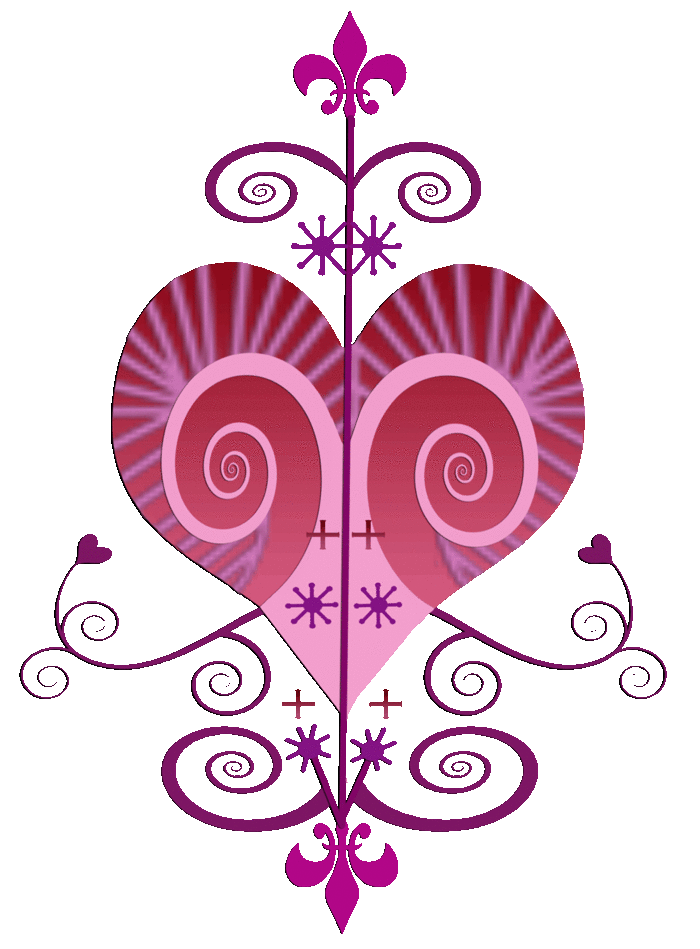
Erzulie弗雷达Veve Design by Denise Alvarado, copyright 2012 Denise Alvarado, all rights reserved worldwide
Erzulie弗雷达Vodou Loa of Love
Erzulie弗雷达is probably the most popular of all the lwas, both in New Orleans Voodoo as well as Haitian Vodou. She is the “goddess” people view as the most beautiful and the one who can help with love and romance. Her colors are pretty pinks and white, her Catholic syncretic Saint is a beautiful image - Our Lady of Sorrows (Mater Dolorosa) - and let’s face it, people like attractive people, places and things. And, they like the deities they worship to be attractive, too.
Erzulie弗雷达embodies love and is the spirit of beauty, jewelry, dancing, luxury, and flowers. She represents the epitome of femininity and compassion. She is frequently invoked to help find a lover, or renew a love relationship. Erzulie Freda is considered a Rada lwa and so her domain is water and she lives on the riverbanks. Her colors are white and pink. She wears three wedding bands for her three husbands: Damballa, the serpent lwa, Agwe, the patron lwa to fishermen, and Ogun Feray, the patron lwa of iron and technology. Her symbols are a heart, a mirror, and a fan.
This article is accurate and true to the best of the author’s knowledge. Content is for informational or entertainment purposes only and does not substitute for personal counsel or professional advice in business, financial, legal, or technical matters.
Questions & Answers
Question:Who is Damballah?
Answer:Damballah Wedo is one of the most revered spirits, an ancient loa, referred to as a root loa. He is the sacred serpent deity of peace and purity, of platinum and silver, and the one who grants riches and sustains the world.
Reader Feedback
stokleyon May 04, 2019:
how to become a voodoo initiate
Felicia Dantoon November 01, 2018:
Thank you for this site. Two grave errors though, PLEASE CORRECT THEM:
Ogun is NOT Yemoja's son, he was her husband until she fled to Olokun in the deep ocean.
Ezili Danto is NOT mulatto, she is a DARK SKIN heavy set woman.
其他一切都很准确
foolish didnt help me i saw symbols on top and they showed godson June 02, 2018:
foolish didnot help me i saw symbols on top and they showed gods
Danyon April 30, 2018:
Please stop calling Erzulie Dantor the patron lwa of the lesbians. She protects men and women, she just have to like you, it doesn't matter if you're male or female or if you're gay or not, to her people are just people no matter their sexual orientation, their social status or their gender, she has many children and she love them all. I do not like it when white people thinks they know so much about my culture and start spreading nonsense about it.
Maluon April 05, 2017:
I've learned so much.thank you for enlightening me.
Jumeauon December 29, 2016:
How is Agausu a white man eh
Vanessaon December 23, 2016:
Why flour is use on the symb?
Dezell-Diselleon December 15, 2016:
Do u give personal advise and more other than here? I sent a friend's request on Facebook can we chat sometimes plz.
Renee Mcdonaldon May 03, 2016:
Danton Is not mallato she's dark skinned black Fredda Is Mallotto Or Light skinned but all the other info pertaining to them is accurate
Martinon January 13, 2016:
Hi i am new to all this but not knew to the spirit world i believe that i have a direct connection to papa legba and i would like to know how i could call upon him so to speak
devonta nelsonon July 31, 2015:
I would like to know more
Kitty Fieldsfrom Summerland on March 26, 2015:
Voted up, awesome and useful and also shared.
david-forte-948on June 10, 2013:
Please contact me as soon as possible. I'd like to use one of these symbols in artwork.
anonymouson August 31, 2010:
Thumbs up!Great lens... very informative. Thanks for the good read.----------------------------- Article Rewriter Review
Sensitive Fernon April 29, 2010:
Great way to explain and show the veves! Blessed by a squid angel. :)
religions7on December 18, 2009:
Gosh: voodoo mandalas ;) Great lens, blessed by a squidangel :)


